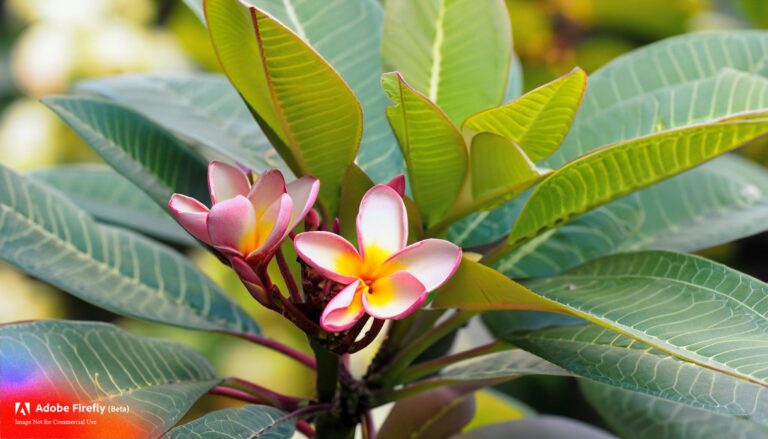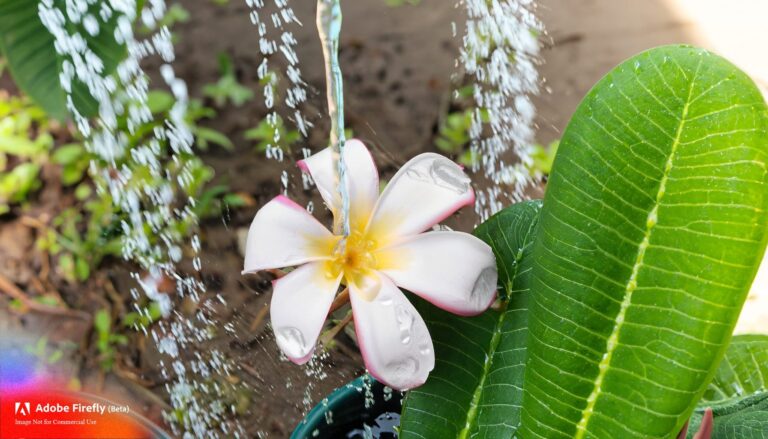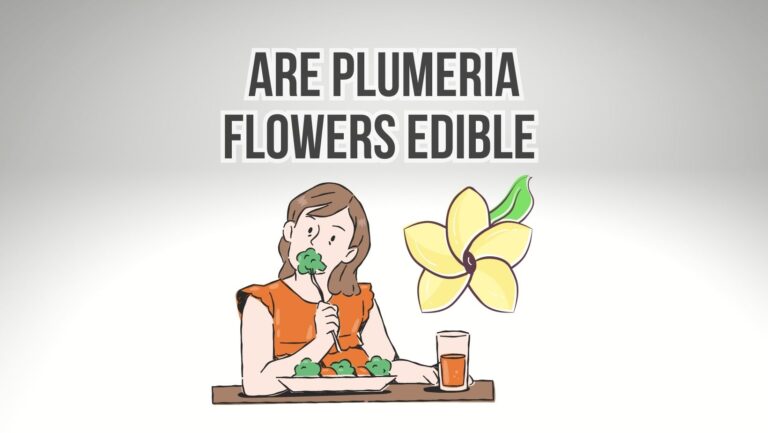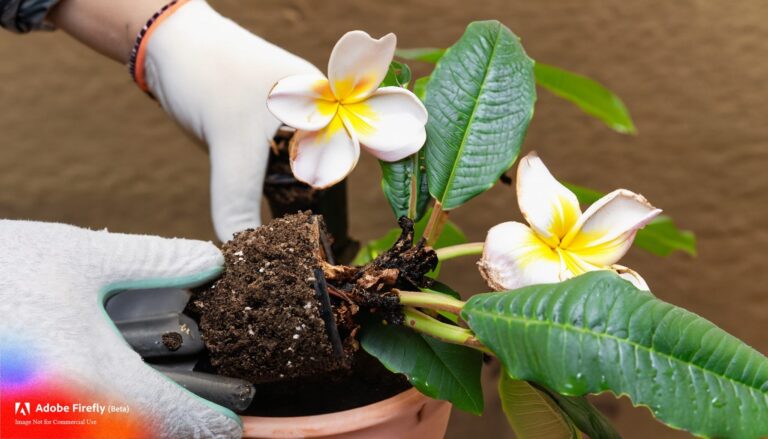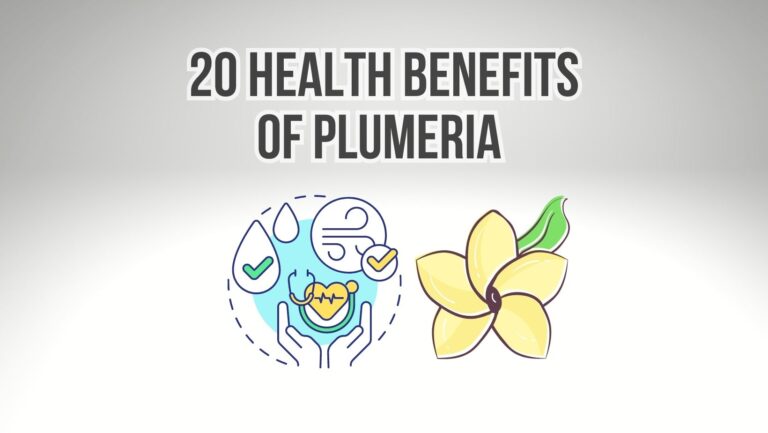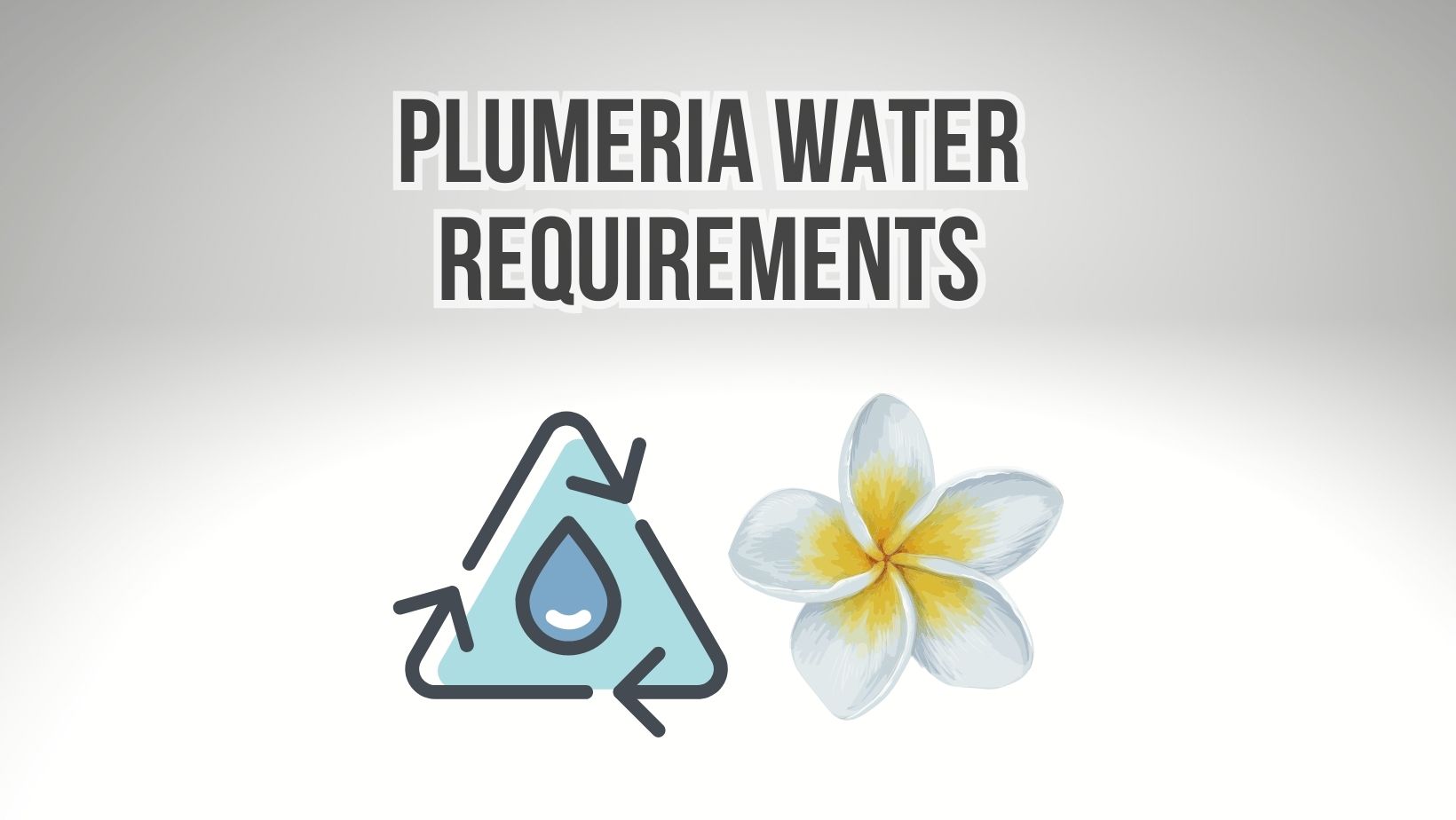
Proper watering is crucial for the health of plumeria plants, and avoiding overwatering is important to prevent root rot and other moisture-related issues. Here are some guidelines to help you meet the water requirements of plumeria and avoid overwatering:
- Soil Moisture: Plumerias prefer slightly dry conditions between waterings. Before watering, check the moisture level of the soil by inserting your finger about an inch (2.5 centimeters) deep into the soil. If it feels dry at that depth, it’s an indication that it’s time to water.
- Watering Frequency: Water your plumeria when the top inch (2.5 centimeters) of the soil feels dry. This may vary depending on factors such as climate, pot size, and environmental conditions. As a general guideline, plumerias in pots may require watering approximately once every 7 to 10 days during the active growing season. Adjust the frequency based on the specific needs of your plant and the conditions it is growing in.
- Watering Technique: When watering, thoroughly saturate the soil until water starts to drain from the bottom of the pot. This ensures that the water reaches the root zone and helps flush out any accumulated salts. Avoid shallow watering that only wets the surface of the soil, as this can lead to inadequate moisture for the roots.
- Drainage: Proper drainage is essential to prevent waterlogging and root rot. Ensure that the pot has drainage holes at the bottom to allow excess water to escape freely. If you are concerned about the drainage capacity of the potting mix, consider adding perlite or coarse sand to improve aeration and drainage.
- Mulching: Applying a layer of organic mulch around the base of the plumeria can help retain moisture in the soil and reduce evaporation. However, avoid piling mulch against the trunk, as this can create excessive moisture around the stem and promote rot.
- Adjusting Watering in Winter: During the dormant period (winter), plumerias require less water. Reduce watering frequency and only water when the soil feels dry. This helps prevent excess moisture in the cool and less active winter conditions.
- Observation and Monitoring: Regularly observe your plumeria for signs of overwatering, such as yellowing leaves, wilting, or root rot. If you notice these symptoms, adjust your watering practices accordingly. Allow the soil to dry out more between waterings to prevent further issues.
Remember, it’s better to slightly underwater plumerias than to overwater them. Plumerias are drought-tolerant plants that can withstand short periods of dryness. By being attentive to the moisture needs of your plumeria and following these guidelines, you can help ensure a healthy and thriving plant while avoiding the pitfalls of overwatering.
Plumeria Moisture Meter: How It Works?
A plumeria moisture meter is a device designed to measure the moisture content in the soil. It helps you determine the moisture level around the roots of your plumeria plant. Here’s how a plumeria moisture meter typically works:
- Probe: The moisture meter consists of a long probe that you insert into the soil. The probe is usually made of metal and has sensors embedded in it.
- Sensor Function: The sensors in the probe detect the moisture content in the soil. They measure the electrical conductivity between the sensors as an indicator of soil moisture.
- Display: The moisture meter features a display unit that shows the moisture level. It may use a scale or digital readout to indicate the moisture content in the soil.
- Moisture Readings: When you insert the probe into the soil near the root zone of your plumeria, the sensors detect the moisture present in the soil. The meter then displays the moisture reading, indicating whether the soil is dry, moist, or wet.
- Interpretation: Based on the moisture reading, you can interpret whether the soil needs watering or if it’s adequately moist. If the reading shows that the soil is dry, it suggests the need for watering, while a moist or wet reading indicates sufficient moisture.
Remember to insert the probe at different locations around the root zone of your plumeria to obtain a more accurate representation of the soil moisture. This helps you assess if the entire root zone is adequately hydrated or if certain areas need more attention.
Using a plumeria moisture meter can be a helpful tool in determining when to water your plumeria and avoiding overwatering. It provides a more precise measurement of soil moisture, allowing you to make informed decisions about watering based on the specific needs of your plumeria plant.
How Often Do You Water Plumeria?
Watering frequency for plumerias can vary depending on factors such as climate, pot size, and environmental conditions. However, here are some general guidelines for watering plumerias:
- Active Growing Season: During the active growing season (spring and summer), water plumerias when the top inch (2.5 centimeters) of the soil feels dry. This may typically require watering approximately once every 7 to 10 days, but adjust the frequency based on your specific conditions.
- Dormant Season: During the dormant season (winter), plumerias require less water. Reduce watering frequency and only water when the soil feels dry. Be mindful that plumerias are relatively dormant during this time and need less moisture.
What Does An Overwatered Plumeria Look Like?
An overwatered plumeria may exhibit several signs that indicate excessive moisture and potential waterlogging. Here are some common indications of an overwatered plumeria:
How Do You Tell If A Plumeria Is Overwatered? Overwatering can be detrimental to plumerias, leading to root rot and other moisture-related issues. Here are some signs to look for to determine if a plumeria is overwatered:
- Yellowing Leaves: Overwatering can cause the leaves of a plumeria to turn yellow. This is often a result of reduced oxygen availability to the roots due to waterlogged soil. The yellowing may start from the bottom leaves and progress upward.
- Wilting: Surprisingly, overwatered plumerias can also show wilting symptoms. This happens because the roots suffocate in waterlogged soil, hindering their ability to uptake water and nutrients effectively.
- Leaf Drop: Excessive moisture can lead to leaf drop in plumerias. The leaves may become limp, develop black spots, or turn mushy, eventually falling off the plant. This is a response to the stress caused by waterlogged conditions.
- Stunted Growth: Overwatering inhibits the healthy growth of plumeria plants. You may notice that the plant isn’t growing as vigorously as it should or that new leaves and branches are smaller and less developed than usual.
- Root Rot: One of the most severe consequences of overwatering is root rot. If the soil remains consistently waterlogged, the roots can become infected by fungi or bacteria, leading to root decay. Signs of root rot include a foul odor, black or brown mushy roots, and the overall decline of the plant’s health.
- Soil Mold or Algae: Excessive moisture creates a favorable environment for mold or algae growth on the soil surface. This can be seen as a green or fuzzy growth on the top layer of the soil.
If you suspect that your plumeria is overwatered, it’s essential to take corrective measures promptly. Adjust your watering practices by allowing the soil to dry out more before watering again. Ensure proper drainage in the pot, and consider repotting if the soil is retaining too much moisture. Trim any affected roots if root rot is present.
How Do I Know If My Plumeria Needs Water?
Knowing when your plumeria needs water is important to maintain its health and prevent both underwatering and overwatering. Here are a few signs that can indicate your plumeria needs water:
- Soil Dryness: Check the moisture level of the soil by inserting your finger about an inch (2.5 centimeters) deep into the soil near the root zone of the plumeria. If it feels dry at that depth, it’s an indication that the plant may need watering.
- Wilting: Plumerias may exhibit slight wilting when they require water. If the leaves appear droopy or start to curl, it could be a sign of insufficient moisture. However, it’s important to note that wilting can also be a symptom of overwatering, so consider other factors alongside wilting before watering.
- Leaf Color and Texture: If the leaves of your plumeria appear dull, limp, or start to turn yellow, it could be a sign of water stress. Plumerias typically have firm and glossy leaves when well-hydrated. However, keep in mind that yellowing leaves can also indicate other issues, such as nutrient deficiencies or pest infestation, so consider all factors.
- Soil Moisture Meter: Using a moisture meter specifically designed for measuring soil moisture can provide an accurate indication of the moisture level in the soil. Insert the probe into the soil near the root zone, and the meter will display the moisture reading. If the reading indicates dry soil, it’s time to water. However, this is an optional tool, and you can also rely on other visual cues mentioned above.
- Plant Behavior: Become familiar with how your plumeria typically behaves when it needs water. Observe the plant’s overall appearance and behavior over time. By paying attention to your plumeria’s specific growth patterns and response to watering, you can develop a better understanding of its watering needs.
Do Plumerias Like Lots Of Water? Should I Water Plumeria Cuttings?
While plumerias require regular watering, they do not generally prefer excessive amounts of water. They are drought-tolerant plants and can withstand periods of dryness. It’s important to avoid overwatering and ensure the soil has good drainage.
Plumeria cuttings require watering as well, but it’s crucial to avoid overwatering. Treat them similarly to established plumeria plants by watering when the top inch of the soil feels dry. Proper moisture levels are necessary for the cuttings to root successfully.
How Do I Get My Plumeria To Bloom More?
To encourage plumerias to bloom more, provide the following:
- Adequate Sunlight: Plumerias require full sunlight to promote flower bud formation. Ensure your plumeria receives at least 6 to 8 hours of direct sunlight daily.
- Optimal Temperature: Plumerias thrive in warm temperatures above 60°F (15°C). Ensure your plumeria is in a warm environment to encourage blooming.
- Proper Nutrition: Provide balanced fertilization during the growing season and supplement with a higher phosphorus fertilizer during the blooming period. Avoid excessive nitrogen, as it can promote foliage growth at the expense of flowers.
- Pruning: Proper pruning helps stimulate blooming. Prune your plumeria in late winter or early spring before new growth emerges to shape the plant and remove dead or overgrown branches.
- Patience: Plumerias may take a few years to mature and reach blooming size. Be patient and continue providing proper care and conditions for your plumeria.
Summary
In summary, here are key points regarding watering and moisture requirements for plumeria:
- Plumerias prefer slightly dry conditions between waterings. Water when the top inch (2.5 centimeters) of the soil feels dry.
- Use your finger to check the soil moisture by inserting it about an inch (2.5 centimeters) deep into the soil near the root zone of the plumeria.
- Wilting, yellowing leaves, and dull leaf appearance can indicate that your plumeria needs water, but consider other factors as well.
- Consider using a moisture meter designed for measuring soil moisture to obtain a more accurate reading.
- Overwatering can be detrimental to plumerias, leading to root rot and other issues. Avoid excessive watering and ensure the soil has proper drainage.
- Plumerias do not require lots of water. They are drought-tolerant plants and can withstand periods of dryness.
- It’s better to slightly underwater plumerias than to overwater them. Monitor the soil moisture and adjust your watering practices accordingly.
By following these guidelines and being attentive to your plumeria’s watering needs, you can maintain the health and well-being of your plant and help it thrive.

